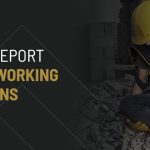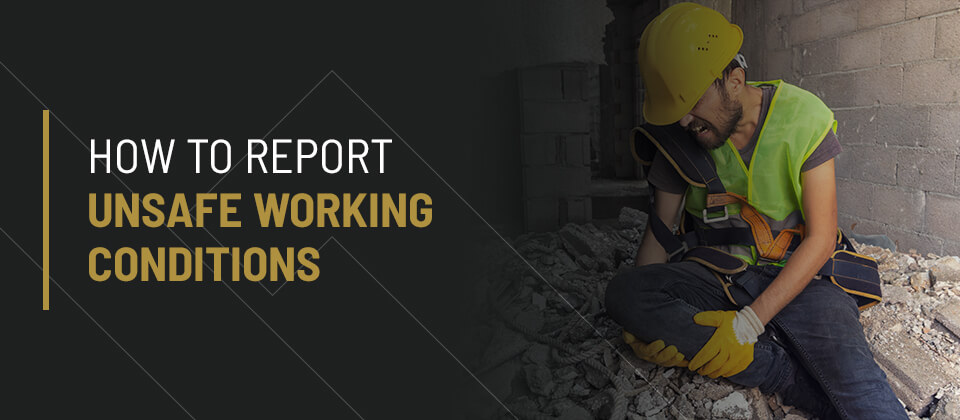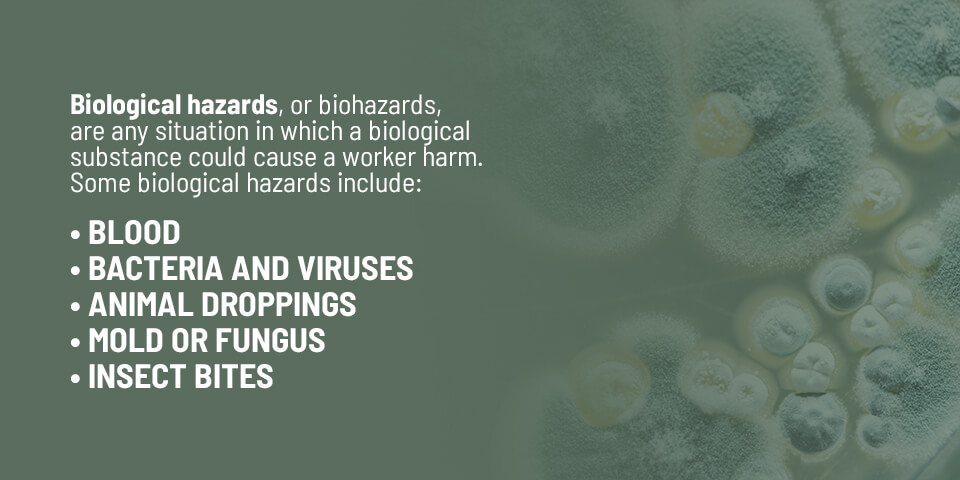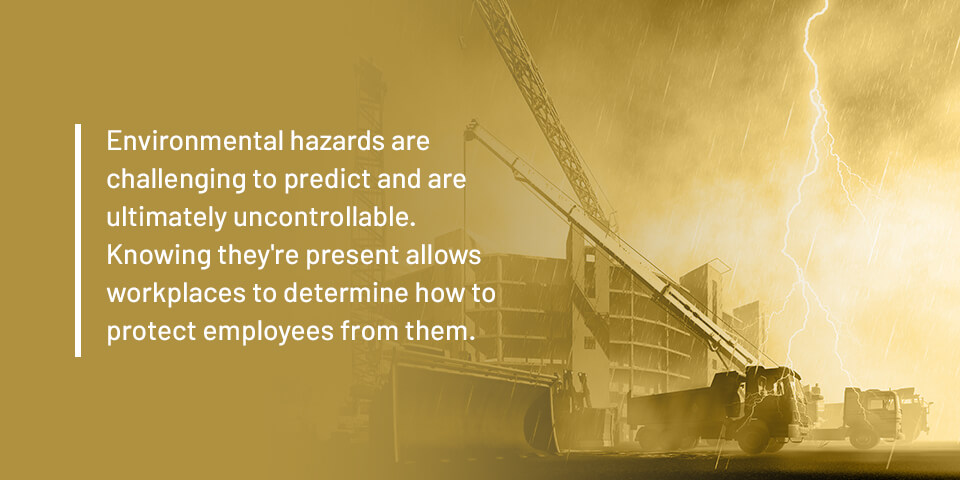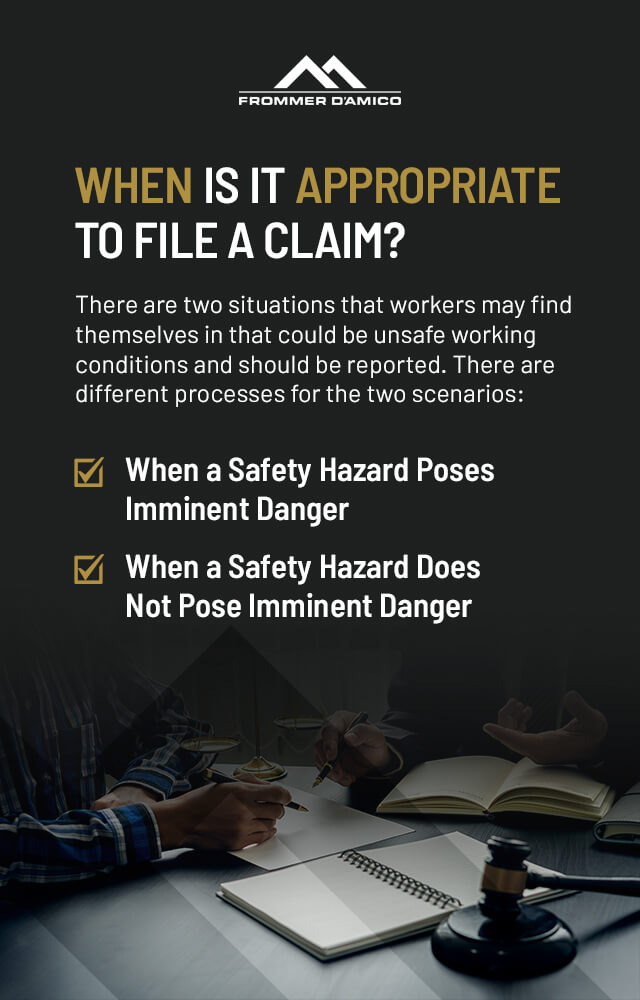While you shouldn’t feel unsafe at work, many industries come with more hazards than others. Even in jobs with seemingly less risk, dangerous working conditions can arise. These unsafe situations can be obvious or subtle. Sometimes, the conditions have already led to injury or illness. Other times, it has yet to get to that point, but there is still cause for concern.
Juggling all of these scenarios is simplified when you learn what exactly qualifies a situation as an unsafe working condition. You can then determine what the best next course of action is and how to proceed. It is always best to err on the side of caution and know how to report unsafe working conditions.
What Are Unsafe Working Conditions?
You may be unsure whether or not your working conditions are legally considered unsafe. There are several categories of unsafe conditions to be aware of that will help you know whether your work environment applies:
Safety Hazards
Safety hazards are working conditions that could cause death, illness or injury. These concerns are among the more common dangerous working conditions and include a wide variety of scenarios:
- Confined spaces: Working in confined spaces makes accidents more likely to happen and injury difficult to avoid. Should something fall nearby, there is less room for a worker to get out of the way.
- Spills or trips: Anything left out on the floor, such as stray wires or cords, or even outdoor areas that quickly get icy are considered safety hazards. These can cause workers to spill things that could be harmful to them or trip and hurt themselves.
- Falls: Working from heights that could lead to a harmful fall is a safety hazard. Though sometimes inevitable, there should be precautions put in place to protect workers.
- Electrical hazards: Frayed wires in a workspace, missing ground pins or improper wiring in the building are safety hazards.
- Machinery: Machinery left unguarded or with pieces that move even when accidentally touched can cause injury and are considered safety hazards.
Biological Hazards
Biological hazards, or biohazards, are any situation in which a biological substance could cause a worker harm. This type of hazard is relatively common despite being limited to more specific workplaces, such as health care or day care facilities. Some biological hazards include:
- Blood: Being exposed to blood can leave you at risk for transmittable diseases. This is a risk most commonly found in medical care facilities but could be an issue in other places, as well.
- Bacteria and viruses: This is a biological hazard most often posed to people in research laboratories or similar contexts.
- Animal droppings: Scientists, zookeepers or other people in professions that work with animals could be dangerously exposed to toxins in animal droppings.
- Mold or fungus: Working in indoor or outdoor settings where moisture is common can put workers at risk for harm from mold or fungus.
- Insect bites: Working outside in areas where harmful bugs are common is a biological hazard.
Physical Hazards
Physical hazards occur without a worker needing to touch something. Site factors are often the cause of physical hazards and pose a threat to workers in specific environments:
- Continuous loud noise: Being constantly exposed to loud noises without adequate protection can cause a worker to experience hearing damage.
- Radiation: Radiation comes in a lot of different forms, but both ionizing and non-ionizing radiation puts workers at risk.
- Sunlight or ultraviolet rays: Workers that are often exposed to a large amount of sun or ultraviolet rays can develop risky health conditions.
Ergonomic Hazards
Ergonomic hazards can occur in any line of work that puts strain on workers’ bodies. Often, these go unnoticed for a long time, as the short-term effects may present as nothing more than sore muscles. Ergonomic hazards stem from a variety of scenarios:
- Improperly set up work stations: People who work from a desk need particular ergonomic setups to prevent strain and injuries.
- Lifting: Jobs that require a lot of heavy lifting can cause workers to have various ergonomic issues.
- Repetitive awkward movements: Jobs that require heavy lifting may also require some movements that are not natural for the human body, which can lead to pain and various orthopedic issues.
- Vibration: Being exposed to constant vibration in the workplace, like that caused by operating heavy machinery, is an ergonomic hazard.
Chemical Hazards
Chemical-related hazards can lead to various accidents and injuries. They may include:
- Unlabeled containers: Chemical containers should always be labeled with what is inside as well as other pertinent information to keep those working with the substance safe.
- Cleaning products: Cleaning products are the most likely source of a chemical hazard for most people. They should be stored away and only brought out when they are actively being used.
- Flammable materials: Being around flammable materials in a workplace puts workers at greater risk for accidents and injuries.
- Gases: Various gases like propane, carbon monoxide or acetylene can pose a chemical hazard to workers.
- Pesticides: People working in agricultural settings face a chemical hazard from the pesticides they use on plants and crops.
Work Organization Hazards
Sometimes, a workplace may have issues that cause a person stress or strain. Some of these hazards are less physical and more psychological:
- Workload demands: Being overworked can cause employees to develop mental and physical health issues due to stress, lack of sleep and mental exhaustion.
- Respect: A lack of respect can cause extra stress and frustration to a job that can be hazardous. It could even be a situation where a person’s colleagues don’t respect their shared supervisor, which could lead to an unsafe situation on the job.
- Social environment: How a person gets along with their colleagues can affect their mental state. If a team does not get along, it could also cause dangerous situations if a job is high risk and requires cooperation from its employees.
- Workplace violence: Violence in the workplace is a safety hazard for obvious reasons. Even if certain employees are not the victim of violence, they are at risk for other hazards, as their focus will not be on the work itself, which could be dangerous in a high-risk job.
- High intensity: Jobs that work at a fast pace and at a high intensity can put people at risk for making harmful mistakes or getting burnt out.
Environmental Hazards
Environmental hazards are challenging to predict and are ultimately uncontrollable. Knowing they’re present allows workplaces to determine how to protect employees from them. Here are some examples:
- Extreme temperatures: Whether employees are exposed to extreme heat or extreme cold, they are at risk for physical harm either way. It is important to limit exposure to these conditions.
- Pollution: Air and chemical pollution can be harmful but often go unnoticed. It is important to be aware of how much pollution a workplace is exposed to and take appropriate action.
- Extreme precipitation: Rain and snow occur often, but in some climates, they can get to a dangerous level and cause flooding and other damages.
Other Hazards
A lot of the hazards listed are inevitable in certain working environments, and their presence alone may not be enough to make them unsafe working conditions. If these risks are present in the workplace and there are no precautions put in place to protect employees or the precautions aren’t working, there may be a case for unsafe working conditions.
Here are some poor working condition examples:
- Lack of training: If a workplace requires employees to work with heavy equipment or other risky tasks, it is important that they are put through comprehensive training.
- Poor equipment: Workplaces must use heavy equipment and machinery in the best condition possible to help ensure worker safety.
- Failure to clean up spills: Spills that are not cleaned up pose safety risks to workers, some more serious than others.
- Failure to supply personal protective equipment (PPE): When working with potential chemical or biological hazards, a workplace must provide adequate safety equipment for its employees.
- Inadequate safety warnings: The risk that workplaces are asking their employees to undertake must be made clear to them upfront.
When Is It Appropriate to File a Claim?
There are two situations that workers may find themselves in that could be unsafe working conditions and should be reported. There are different processes for the two scenarios:
When a Safety Hazard Poses Imminent Danger
If there is imminent danger to an employee or their colleagues, it is important to file a complaint immediately. In this situation, employees also have the right to refuse to work until things are resolved.
Because time is a factor in these situations, it is important to immediately file a complaint before trying to reason with a supervisor. The Occupational Safety and Health Administration (OSHA) outlines guidelines for employers on how to provide safe working environments to their employees. If these guidelines aren’t followed, there are steps employees can take to report the concern, which we will detail later.
When a Safety Hazard Does Not Pose Imminent Danger
If there is no imminent danger to employees due to a safety hazard, the first step should be to talk to a supervisor who has the ability to make the change necessary to make the workplace safer.
If the employer fails to make the appropriate changes, it is important to take the complaint to OSHA. If the situation gets to this point, it is again possible for employees to refuse to work until conditions are safe. Note that if there are alternative tasks you can do that are safe, you are still required to fulfill those.
How to File an OSHA Complaint
OSHA offers a variety of methods to follow to file an unsafe work environment complaint. The OSHA-7 Form outlines required information, but it is not the only way to submit a claim. You can use an online complaint form to submit your claim, or you can send a physical copy via fax, mail or email to your local Pennsylvania OSHA office.
If your situation is more urgent, there is a main line you can call, or you can call your local office. An OSHA staff member can help you determine what the best next course of action is if you are unsure. You can also visit your local office in person to discuss the issue in greater depth with a representative. The response to your complaint will likely be an inspection of your workplace by an OSHA representative.
Protection Against Discrimination
Those who file an OSHA complaint are protected against discrimination from their employer under Section 11(c) of OSHA. This means that if you are fired, disciplined, demoted or punished in any way after you submit an unsafe workplace complaint to OSHA, you can file a discrimination complaint against your employer. Employees in every workplace deserve to be as safe as possible and should not be punished for making sure they are protected.
If you do feel you have been discriminated against after filing a complaint, it is important to file a discrimination complaint within 30 days so OSHA can take action.
What Information Should You Include in an OSHA Complaint?
The most important thing to include when submitting an OSHA complaint is as many specific details as possible. This includes the number of employees exposed to the hazard and all details about the hazard itself.
Though there does not need to have been injury, illness or death to justify submitting a complaint, if that has occurred, you should provide very specific details about the incident. You should be able to tell an OSHA representative how long the dangerous conditions have been going on for as well as details about anyone working to fix the problem, if that is relevant.
Other than the description of the hazard, you should also include:
- The company’s name without abbreviations
- The site address where the issue occurred
- The site phone and fax numbers
- The company’s mailing address if this differs from the site address
- The company’s phone and fax numbers if they differ from the site contact numbers
- The management official’s name, whether a safety engineer, site manager or company official who works on-site
- The management official’s phone number or that of a head office
- The industry you work in
- Your name, address, contact information and signature
You can also select whether you’ve brought this issue to your employer’s attention or that of another government agency. There is also a box to check regarding whether or not you want your name revealed to your employer.
Contact Frommer D’Amico for Help in Your Unsafe Working Conditions Situation
Frommer D’Amico is committed to helping injured workers and providing workers’ compensation assistance. We strive to provide quality workers’ compensation help in Pennsylvania to get injured workers the money they deserve.
If you have been injured in poor working conditions, we can help you. We offer free consultations on top of free case management and promise absolute confidentiality. Contact us today to find out more information about what your situation means from a legal perspective and how we can serve you.
